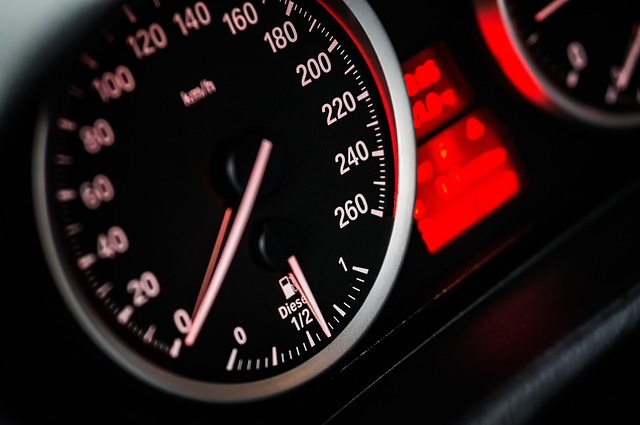Looking to register your car in California? This comprehensive guide walks you through every step. From understanding the state’s registration requirements and gathering essential documents for a smooth DMV VIN verification process, to preparing your vehicle for inspection and completing the official registration at the DMV office, we’ve got you covered. We’ll also cover post-registration essentials like insurance, tags, and maintenance.
- Understand the Requirements for Car Registration in California
- Gather Necessary Documents for DMV Vin Verification
- Prepare Your Vehicle for Inspection and Title Transfer
- Complete the Registration Process at the DMV Office
- Post-Registration Steps: Insurance, Tags, and Maintenance
Understand the Requirements for Car Registration in California

Before registering your car in California, it’s crucial to understand the requirements set by the Department of Motor Vehicles (DMV). One of the key steps is ensuring your vehicle passes a DMV VIN verification process, which checks the vehicle’s unique identification number against their records. This is typically done through a mobile vin verifier or inspection service that provides instant results, making the process more efficient.
Additionally, you’ll need to meet specific criteria related to the car’s age, emissions standards, and safety features. Ensure your vehicle is up to date with all necessary inspections and has a valid registration from its previous state of residence. These prerequisites are essential for a smooth car registration experience in California.
Gather Necessary Documents for DMV Vin Verification

Before heading to the California DMV for registration, ensure you have all the required documents ready for a seamless dmv vin verification process. This typically includes the vehicle’s title, a valid registration from the previous state (if applicable), proof of insurance, and your driver’s license or state-issued ID card. Among these, the vin inspection is a crucial step as it verifies the accuracy of the Vehicle Identification Number (VIN) on your car.
Having a mobile vin verifier can be beneficial, especially if you’re time-constrained or prefer a more convenient approach. These mobile services allow you to conduct the dmv vin verification online or over the phone, saving you a trip to the DMV. Just ensure that the service is reputable and approved by the California DMV to avoid any potential issues during the registration process.
Prepare Your Vehicle for Inspection and Title Transfer

Before you can register your car in California, ensure your vehicle is prepared for the necessary inspections and document transfers. Start by obtaining a Vehicle Identification Number (VIN) verification from a trusted source, such as a mobile vin verifier or through a professional inspection service. This step involves a detailed dmv vin verification process to ensure the vehicle’s history is clean and free of any discrepancies.
Next, gather all required documents, including proof of ownership, insurance, and identification. Prepare your vehicle for a thorough examination by ensuring it meets safety standards, with functional lights, brakes, tires, and emissions controls. A mobile vin inspection can help facilitate this process by providing on-site services, making it easier to address any issues before proceeding with the registration at the California Department of Motor Vehicles (DMV).
Complete the Registration Process at the DMV Office

After gathering all the necessary documents and ensuring your vehicle meets California’s requirements, it’s time to complete the registration process at a DMV office. This is where the crucial step of VIN (Vehicle Identification Number) verification takes place. Bring your car along, as they will need to inspect the vehicle to confirm its authenticity. The process typically involves a visual inspection of the vehicle’s unique VIN plaque, which can be located on the dashboard or near the door frame.
DMV personnel will compare the provided information against their records and perform a mobile vin inspection (or vin inspection) to ensure it matches the data in their system. This step is essential to prevent fraud and ensure the registration process goes smoothly. Having all your documents in order beforehand, including proof of ownership, insurance, and identification, will expedite this verification process.
Post-Registration Steps: Insurance, Tags, and Maintenance

After successfully registering your vehicle with the DMV, there are several crucial post-registration steps to complete. One of the most important is acquiring appropriate insurance coverage for your vehicle. California requires all vehicles to have valid insurance before they can be driven on public roads. You’ll need to shop around for a policy that meets the state’s minimum liability requirements and fits your specific needs.
Additionally, you’ll need to obtain vehicle registration tags (also known as plates) from the DMV. These tags are not only essential for identifying your vehicle but also required for legal driving. While many people opt for traditional in-person tag acquisition, services like mobile vin verification and vin inspection using a mobile vin verifier can offer a convenient alternative. Ensure that you follow all guidelines regarding registration renewal, maintenance inspections, and emissions testing to keep your vehicle up-to-date and legally compliant.
Registering a car in California involves understanding specific requirements, gathering essential documents for DMV VIN verification, preparing your vehicle for inspection and title transfer, and completing the registration process at the DMV office. Post-registration, don’t forget to secure insurance, display tags, and maintain your vehicle to ensure legal compliance and optimal performance. By following these steps, you’ll navigate the process smoothly and hit the roads with confidence.



